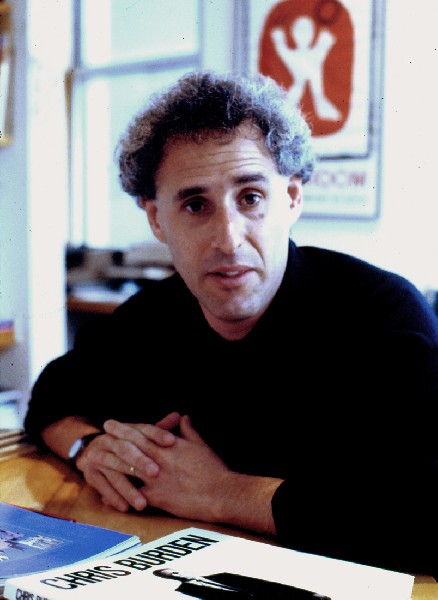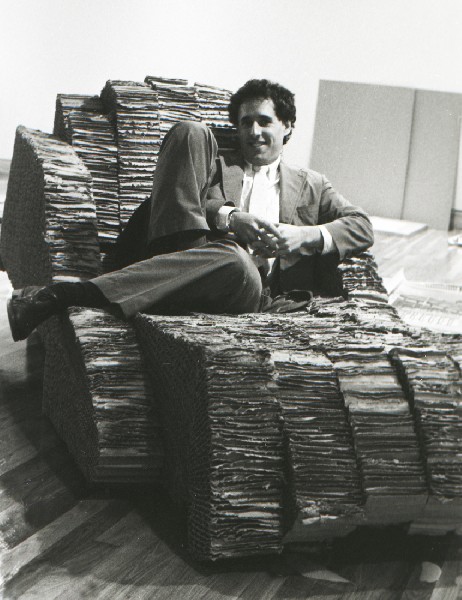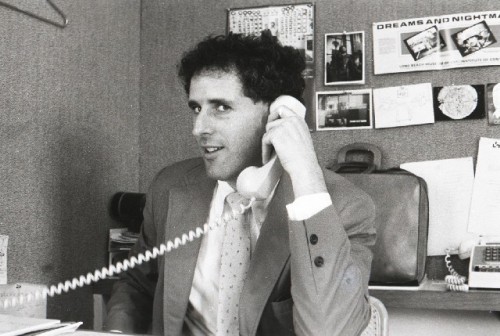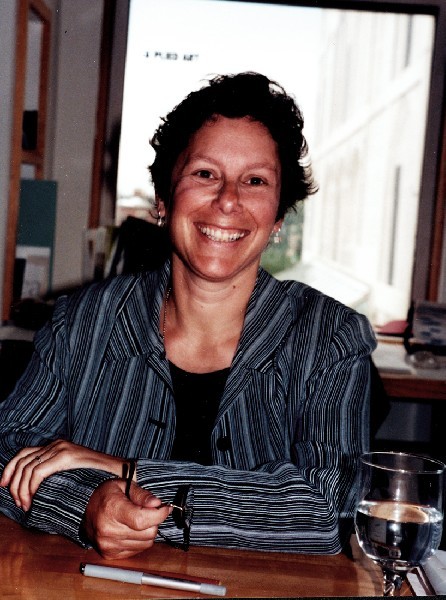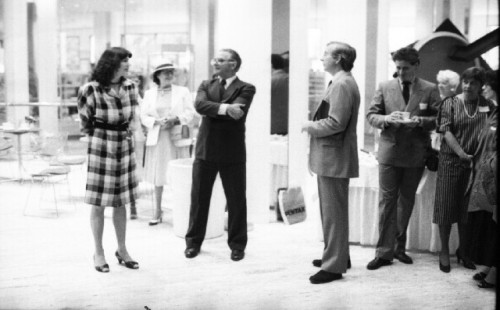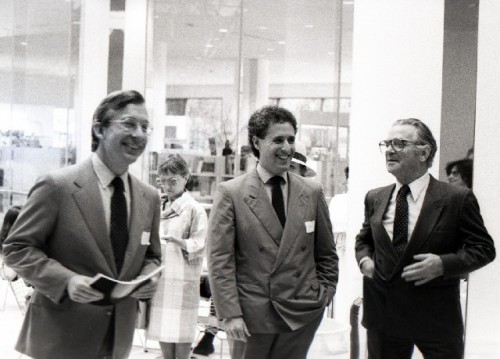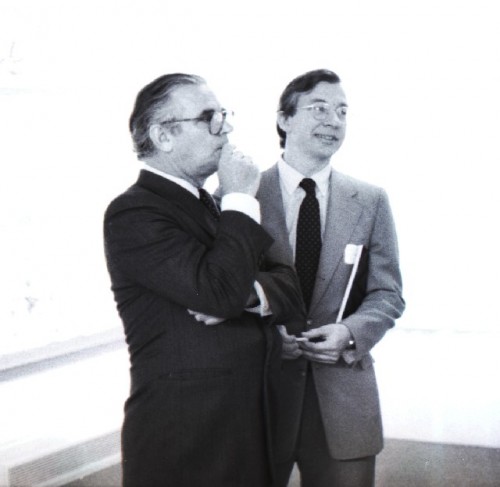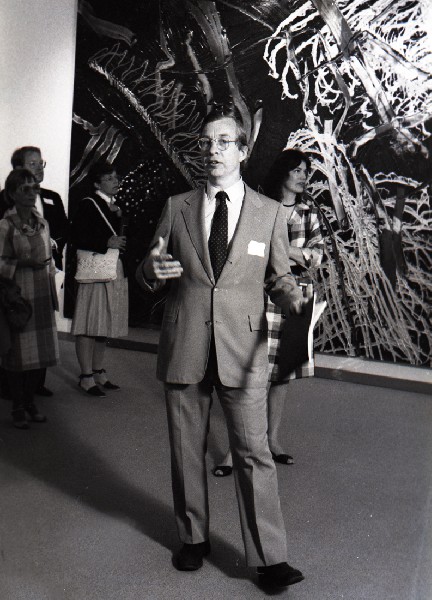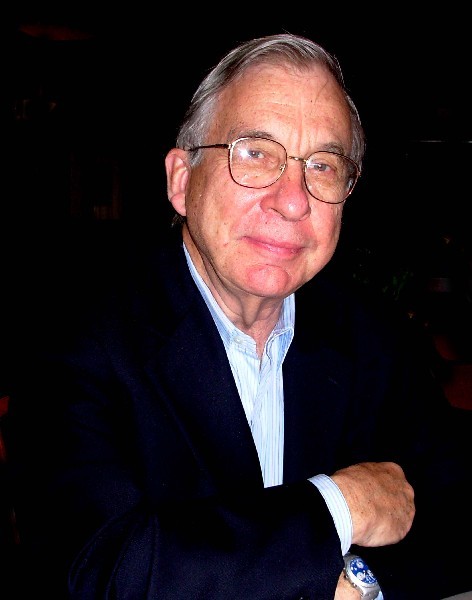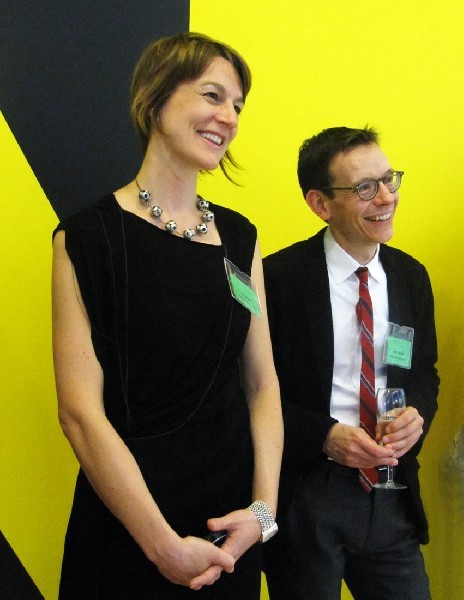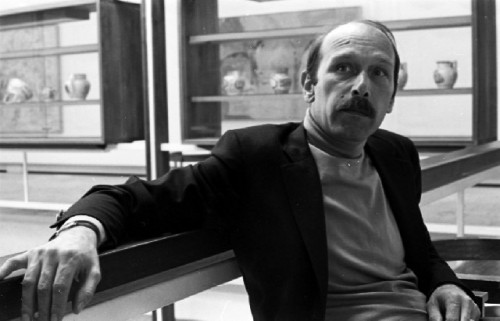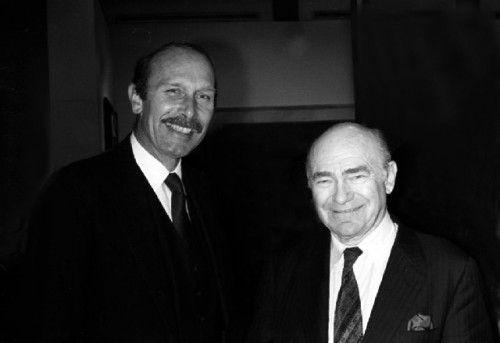David A. Ross Two
Critical Remarks on the MFA and Rose
By: David Ross and Charles Giuliano - Nov 19, 2011
Charles Giuliano You enjoyed a close relationship with Ted Stebbins when he was curator of American Art at the Museum of Fine Arts. You and the ICA worked with Ted on the BiNational exchange with Germany.
David Ross No. That was more Trevor (Fairbrother) and Kathy (Halbreich).
CG Trevor and Kathy weren’t at the MFA at that point. It was Ted and Amy Lighthill.
DR Maybe you’re right. Amy was good. What happened to Amy? (Actually after fact checking Ross was right. Fairbrother represented the MFA during the BiNational.)
CG Amy is out of the game.
DR She was very bright.
CG Amy was pushed out. Then Alan Shestack hired Kathy (Halbreich).
(She had overseen the establishment of the List Visual Arts Center at MIT in its then new Media Lab building. She was responsible for the move from the Hayden Gallery which she took over from Wayne Anderson. At the time it was viewed as a brilliant hire for the MFA. When she left for the Walker Art Center her assistant, Trevor Fairbrother, was given the vacated position.)
DR Kathy left her impact on the MFA by having that space (Foster Gallery) so beautifully done. I still love that space. It was done by Richard Gluckman.
CG That’s where the Ellsworth Kelly exhibition is now housed.
(It continues as a special exhibition area. Above it in the Linde Family Wing what was originally the Gund Gallery has been moved to the basement of the Art of the Americas Wing. The former special exhibition galleries are now installed with the museum’s contemporary collection.)
DR The Ellsworth Kelly was nice there.
CG Nice! That’s underwhelming praise.
DR It wasn’t a great Kelly show. If I’m going to see Kelly’s sculpture I want to see the large outdoor pieces and his works that have more scale. Kelly should be seen in the context of Richard Serra. That’s the vocabulary. There they made him seem much too domestic. For me, I love Kelly the painter. I know he’s a terrific sculptor too. But I love Kelly as a painter.
CG Can we talk about the MFA’s start on forming a contemporary collection?
DR There’s some terrific objects in it.
CG Such as?
DR I can’t recall. Don’t have my head screwed on for that. There are some terrific objects. It is clearly a collection with no depth. With very little range. All collections have to start somewhere and it is good that they are showing interest in getting going. The point is how badly it was installed. I can’t over emphasize that. I haven’t read any reviews of it but I can’t imagine that it has been reviewed well.
CG People loved it.
DR You loved it too?
CG I had mixed feelings.
DR Did (Sebastian) Smee (Globe critic) love it?
CG Yeah, for the most part.
DR Well, that’s political. It’s got to be political. Nobody wants to say anything bad about something that someone has raised a ton of money for. It has a lot of hopes. By the way I have a lot of hopes for the future of the MFA. Boston needs a strong collecting MFA. And a strong ICA. And a strong Rose. And a strong MIT. And a strong deCordova. It’s a big city.
CG On your watch at the ICA you passed on collecting.
DR I don’t believe the ICA should collect. Jill (Medvedow) and I agree to differ on that. We all know it would have been great if the ICA was collecting when I was there. Polke and all the people we were showing. It would have been great. It would have changed the institution. I’m more interested in Boston having a perpetually adolescent institution than another grown up institution. The ICA has now become another grown up institution and it’s behaving in a much more grown up fashion. With Helen Molesworth there as a curator who knows? She is one of the great curators of her generation. Heads and shoulders and shoulders above anything that the MFA has in contemporary and 20th century. In fact the woman who’s there was an assistant curator at the ICA before being hired at the MFA. (Jen Mergel is the Beal Senior Curator of Contemporary Art of the MFA.) The MFA needs a curator of stature while the ICA has one.
Helen is great. Helen is as good as Elisabeth Sussman or David Joselit. She’s on that level. Intellectually as well as someone who will be able to do the great shows. In fact her first show Dance and Drawing is an echo of Elisabeth’s old Art and Dance show but taking it a lot further. In some very interesting ways. It’s a great indication of what Boston can expect with a curator of her caliber. I just hope she’s happy with staying in Boston. And staying at the ICA. She seems to be.
CG Speaking of Polke it was interesting to see the Charlene Engelhard painting that you showed at the ICA in Currents now in the permanent collection of the MFA.
DR She gave that to them because of Ted (Stebbins). Over the years I am sure she has regretted giving it away. It’s a great picture and we all love it. It’s great that it’s in a Boston collection. It’s one of the great Polke’s anywhere in America.
CG You worked with Charlene and the ICA had the Engelhard Awards.
DR Charlene is a dear friend. She is a wonderful person and terrifically generous. A woman of considerable wealth who happens to be an artist. She wanted to find ways of giving back to the community she lived in. She gave very generously to the ICA. When Ted was there she gave very generously to the MFA. She loved Ted. We all loved Ted. Ted is such a gentleman. Then she started the Engelhard Awards as a way of more directly giving support to artists in Boston and around the country.
CG That no longer exists.
DR After I left things changed a little bit. Charlene pulled back for her own reasons. It had nothing to do with Milena (Kalinovska who followed Ross at the ICA). She has become much more of a private person.
CG During your nine years at the ICA to what extent were you working with and encouraging collectors?
DR All the time. Vijak (Mahdavi) and (Dr.) Bernado (Nadal-Ginard) started collecting when they saw that little Spanish show at the ICA. It turned them on and they became unbelievably prescient collectors. It turned out to be a problem in some ways.
CG He’s the doctor who got into trouble.
DR Yeah, yeah, yeah, yeah, yeah. When they sold that collection off for the foundation he had allegedly defrauded. Whatever. The objects he bought were incredible. Charlene collected. When museums do their job it excites people to collect.
CG It is often said that Boston does not have major collectors. Do you confirm or deny that?
DR There weren’t a lot when I started and there were a lot more when I left. I’m sure there are a lot more today. I haven’t been keeping track. I’m sure they have a lot more collectors today than thirty years ago.
CG Can we shift to the Rose? Have you visited since the new Foster Wing was added?
DR I haven’t been there since the troubles.
CG Have you seen the new Foster Wing?
DR I have seen that. It was a long time ago before the troubles. (The proposal of former Brandeis President Yehuda Reinharz to sell the collection of the Rose Art Museum.)
CG It was done during the directorship of Michael Rush.
DR Yes, I saw that. I was a fan of Michael Rush (a specialist of video and new media). He and I aren’t exactly friends. But I always admired the range of his interests. His seriousness. And I thought he got a raw deal.
CG Can you comment on the addition that Graham Gund designed.
DR I think it’s adequate.
CG I think it sucks. (An enormous, high, open cube which is poorly connected to the main structure of the museum providing no additional space for storage and other museum functions.)
DR It’s not world changing. It’s adequate. It’s not great. Graham is a wonderful and generous and kind man. But not the world’s greatest architect.
CG He designed the old ICA.
DR Yeah. I remember one of those crazy jammed openings we had when nobody could move. People were jammed into the corners. I said “Graham!” He said “I never thought anybody would actually be interested in contemporary art.” (Laughs) That was basically his take. He never thought there would be big crowds there. Ever.
CG Boston is not thought of as being a strong center for contemporary art. But if you start connecting the dots between ICA, MIT, deCordova.
DR That’s a stupid old prejudice. There’s an enormous community of young artists. Many of whom went to school in Boston and then stayed. The institutions you just mentioned are all first rate. With great thinkers; MIT, Harvard, BU, Tufts, Boston College. A lot of serious colleges generating a lot of serious thinking about art. (Mass Art, the Museum School) As a result it may not be a huge audience but it is enormously sophisticated and thoughtful. An engaged audience. It’s not a city the size of New York but it is a city which has enormous energy and brain power. As a result I always thought it was so delightful to be there. Even if we only had 30,000 people visiting each year they were very engaged people. They really had opinions and cared about what was going on. It was a terrifically fun space to work in. Because of the ways that people took art so seriously.
CG You talk about the Rose and the lack of synergy with the ICA. You told me that in your nine years you visited the Rose often but its director, Carl Belz, on your watch never set foot in the ICA. You described him as staying in his office watching TV or focused on playing tennis.And asleep at the switch.
DR It wasn’t watching TV it was soap operas specifically. This was told to me by people who worked with him. I don’t know him that well.
CG I was an undergraduate at Brandeis when Sam Hunter acquired the Mnuchin collection which launched its permament collection.
DR That was the high point for the Rose, Sam Hunter and the Mnuchin collection. Hunter was a world class character of his time. That was like having Jeffrey Deitch at LA MoCA. Sam Hunter was a player. He wasn’t just an art historian he was a player. He knew all the dealers. He knew all the artists. He was in the trenches. He was one of the guys.
CG After Hunter the Rose had Bill Seitz.
DR He was a serious player. There was the time when Russell Conner was there. He did the first museum exhibition of video art. You know that. Right.
CG He also did the New Television series with WGBH with artists like Otto Piene and Aldo Tambellini.
DR Right, right.
CG Later the Rose did the first Nam June Paik museum exhibition (as well as the first Bruce Conner exhibition).
DR It all made sense. Then Carl had very well mannered taste. I think Carl had an admirable commitment to the artists of the region. Really admirable.
CG Part of that was serendipitous. He had no money.
DR Having no money is not like being born with a cleft palate. Having no money. Raise fucking money. No one gives you money. I didn’t have any money. I went out and raised money. I will never buy the excuse that someone had no money. The money is there to be found if you have ideas and energy. It wasn’t like he was in some small college with no money around. It was fucking Brandeis for God’s sake. The center of Jewish intellectual ambition. In the United States. With hundreds of alumni who went on to fund other museums. All over the world. He just relied on the graciousness of Lois and Hank (Foster) and a few other people. I don’t want to hear that he had no money.
CG There are a couple of things you are glossing over. The Six Day War which changed Jewish philanthropy after which it focused on Israel. Also the Saxe and Powers incident which exposed the radical direction of Brandeis and turned off conservative donors. The fund raising expansionist momentum of Brandeis pulled back after that.
DR He didn’t just have to rely on Jews for money. You didn’t go to Brandeis to study Talmud. Did you?
CG Of course I did. (laughs)
DR (laughs) You went there because it was a first rate intellectual center.
CG I went to Brandeis for a lot of interesting reasons.
DR Right. And he could have raised money for all of those interesting reasons.
CG I don’t regret having gone to Brandeis. But they ripped my heart out in the way that they treated the Rose.
DR It was disgusting. Utterly disgusting.
CG At this point I have no emotional attachment to Brandeis. I feel completely betrayed. Particularly, as you say, how could the center of Jewish intellect and culture prove to be so philistine?
DR Exactly. As a Jew to me it was mortifying. Even though I had nothing to do with Brandeis. As a Jew reading about the board of trustees deciding to sell these pictures because they had trouble raising funds. Fuck them. Go out and do the hard work and raise the funds. Raising money is hard work. I’ve raised a lot of money in my day and it’s hard work. It’s work that’s not impossible to do. You just have to go out and kiss a lot of asses. Go to a lot of bad dinners. Play a lot of client golf. It’s just like being in any other sales business. You go out and make the pitch. And you sell it and you win. You close the deal. That’s it.

